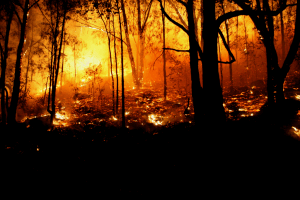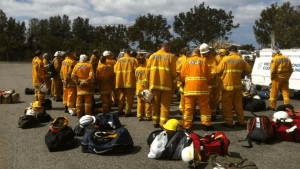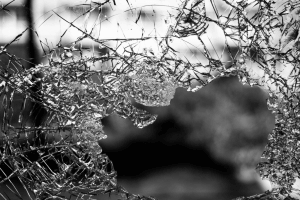Its 40 degrees outside.
The sun is baking down.
For the umpteenth time today, the bells ring and its time to race off to deal with latest crisis the general public is throwing at you. You are hot, you are tired and faced with the likelihood of a structure burning out of control, you brace yourself for the inevitable frenzy of activity that will leave you hot, sweaty and exhausted. Yet you pick yourself up, dress for battle in gear closely resembling a doona, and give it everything you have.
Why? Because thats what you are paid to do and the public expect nothing less of you.
When we speak of extreme working environments, the image of a firefighter striding fearlessly into a blazing inferno is one of the first things that comes to mind. They operate in environments where room temperatures can be in excess of 500 degrees, combined with radiant heat forcing them to the floor, crawling to ensure that no-one is trapped inside, fighting for their very lives.
While this may seem extreme, for the men and women on the front lines, this can be their daily reality.
However, while they work to keep us safe, are we doing everything we can to protect them?
Are they wearing the best gear that money can buy? Or just the best that a poorly devised budget can stretch too?
Are our operating procedures constantly evolving as technology progresses, or are we stuck in a cycle of “we’ve always done it this way?”
And critically, when they leave our sight, disappearing into that smoke-logged building, how are we ensuring that they are safe?
The modern house reaches flashover (the time when the environment becomes untenable) in less than 10 minutes, compared to up to an hour in the past, when our world wasn’t built of plastics and other fuels. This means our firefighters are working in far more extreme environments than ever before. However, are fire services doing everything they can to make sure that the people working in those environments are as safe as possible, or are we working on a principal that “nothing bad has happened yet so its all good?”
In the modern world, where technology plays such a critical role in everything we do, firefighting still relies on the practices of the past. We still send people into extreme environments, knowing nothing about their physiology, how their body is reacting to the increasing heart rates, changes to blood pressure etc that comes with making people hot.
The consequences of guessing, not knowing?
High body temperatures result in increased heart rates (sometimes close to the maximum possible for an individuals heart to sustain), increased gait variability (or the ability to walk safely on uneven surfaces), decreased cognitive ability (the ability to see danger and react!) and changes to an individuals blood (thicker and less able to deliver oxygen to the working muscles or blood to the skin to keep us cool).
What if I told you there was a better way? That maybe, just maybe we could devise technology that allows us to see an individual for what they are? A machine, with various parts that can easily fail if we ask too much of it!
I say yes! We can do better! The question is, do we want to?






